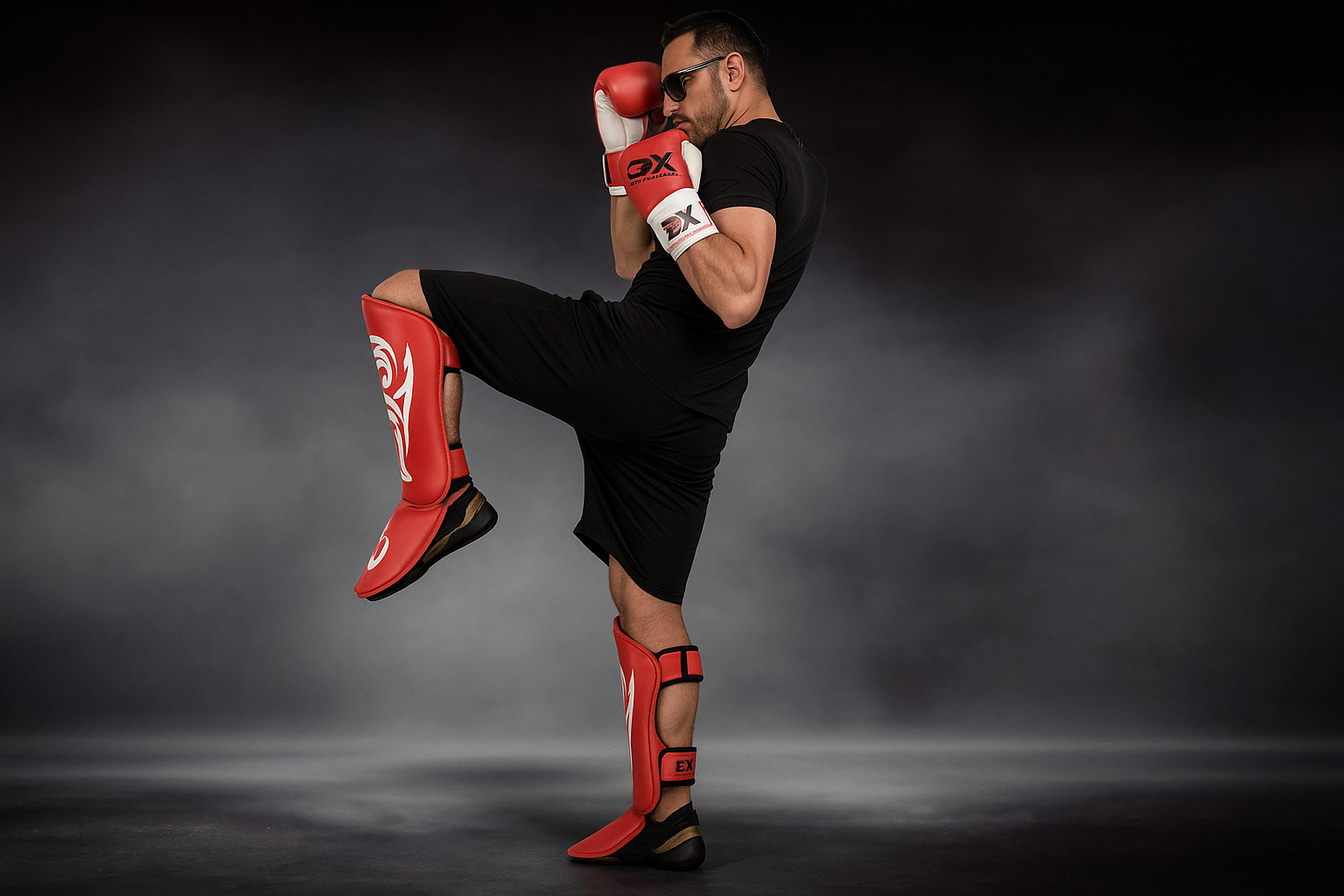Long-Form Blog Article
Introduction to Shin Guards in Kickboxing
When it comes to kickboxing, shin protection isn’t just an option—it’s a necessity. MMA shin guards for kickboxing play a crucial role in safeguarding fighters from painful bruises, fractures, and long-term damage. Whether you’re a beginner sparring for the first time or an advanced striker training daily, choosing the right shin guards can make or break your performance.
But here’s the catch: not all shin guards are created equal. Some offer lightweight mobility but compromise on protection, while others are heavy-duty but limit speed and flexibility. That’s why we’ve put together this complete pros, cons, and buying guide—to help you find the perfect balance between protection, comfort, and performance.
Why Shin Guards Are Essential for Kickboxing
Kickboxing is an impact-heavy sport. Every roundhouse, check, and kick involves direct shin-to-leg contact, which can cause serious injuries if unprotected. Shin guards act as a protective shield, absorbing shock and distributing force away from bones and soft tissue.
Beyond just safety, shin guards also:
- Boost confidence during sparring
- Allow fighters to train harder for longer
- Protect training partners from unnecessary injuries
In short, shin guards aren’t just equipment—they’re an investment in your kickboxing journey.
Types of MMA Shin Guards
Slip-On Shin Guards
- Lightweight and made of elastic fabric
- Best for light sparring or cardio kickboxing
- Less bulky but provide limited protection
Velcro Strap Shin Guards
- Designed with adjustable straps for secure fitting
- Offer excellent stability and protection
- Popular among both beginners and pros
Hybrid Shin Guards
- Combine slip-on comfort with strap security
- Provide balanced mobility and safety
- Great for versatile training between MMA and kickboxing
Pros of Using MMA Shin Guards for Kickboxing
Injury Prevention
The most obvious advantage is that shin guards shield your legs against soft tissue injuries, deep bruises, and fractures.
Better Training Confidence
When you’re not worried about pain, you’ll train harder, kick sharper, and build real fighting confidence.
Enhanced Performance
Weight is distributed uniformly by good shin guards, enabling smooth motions free from needless effort.
Cons of MMA Shin Guards
Reduced Mobility
Certain shin guards might feel heavy, which reduces speed and slows down kicks.
Comfort Issues
Cheap shin guards often slip, pinch, or cause skin irritation during long training sessions.
Durability Concerns
Budget options may wear out quickly, especially with heavy sparring.
Key Features to Look for in Shin Guards
- Material Quality – Leather vs. synthetic materials
- Padding Thickness – Thick for sparring, lighter for speed drills
- Fit & Strapping System – Velcro or slip-on
- Weight & Mobility – Balance between speed and safety
- Breathability – Prevent sweat buildup and odor
Top Picks for 2025: The Best MMA Shin Guards for Kickboxing
Budget-Friendly Options
- Good for beginners and light sparring
- Brands like RDX, Everlast, and Venum
Mid-Range Performance Shin Guards
- Better durability and comfort
- Ideal for consistent training
Premium Professional Shin Guards
- High-quality leather, multi-layer padding
- Perfect for fighters and advanced kickboxers
How to Choose the Right Shin Guards for You
- Beginners – Go for budget or mid-range shin guards with good padding
- Intermediate/Advanced – Choose hybrid or professional-level guards
- Kickboxing vs. MMA – Kickboxing needs thicker padding, MMA needs lighter for grappling
Proper Care and Maintenance of Shin Guards
- Cleaning – Wipe down with disinfectant after each session
- Drying – Air dry completely to prevent bacteria buildup
- Storage – Keep in a dry, ventilated area
FAQs About MMA Shin Guards for Kickboxing
1. Do I need shin guards for kickboxing sparring?
Yes, they’re essential for safety and performance.
2. What’s the difference between MMA and Muay Thai shin guards?
Muay Thai shin guards are usually heavier with more padding, while MMA versions are lighter for grappling.
3. How do I know my shin guard size?
Most brands provide a sizing chart based on height and shin length.
4. How often should I replace shin guards?
On average, every 12–18 months depending on use.
5. Can I wear MMA shin guards for kickboxing and MMA?
Yes, hybrid models are designed for cross-training.
6. What material is best for shin guards?
Genuine leather offers the best durability, while synthetic options are budget-friendly.
Conclusion: Choosing the Best Shin Guards for Safe and Effective Training
Shin guards are an extension of your fighting prowess, not merely a piece of protective equipment. The right MMA shin guards for kickboxing will protect your shins, improve performance, and give you the confidence to push past limits.
When buying, always weigh the pros and cons, consider your training level, and choose shin guards that strike the balance between comfort, durability, and protection

